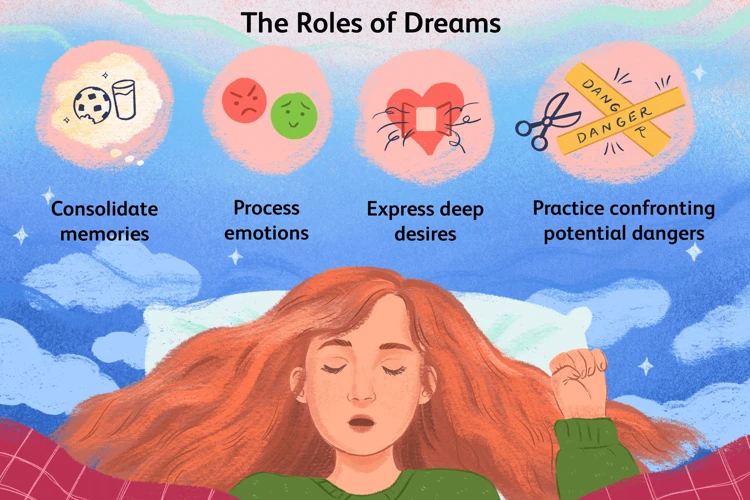Have you ever wondered what it would be like to have complete control and awareness in your dreams? Lucid dreaming is a fascinating phenomenon that allows individuals to experience just that. It is a state of consciousness where the dreamer becomes aware that they are dreaming and can actively participate in and manipulate the dream. However, achieving lucidity in dreams is not always easy. This is where reality testing and dream signs come into play. By incorporating reality testing techniques into your daily life and learning to recognize dream signs, you can increase your chances of having lucid dreams. In this article, we will explore the connection between reality testing and dream signs in lucid dreaming, as well as provide techniques to enhance your lucid dreaming abilities. So, prepare to dive into the realm of dreams and unlock the power of lucidity!
What is Lucid Dreaming?

Lucid dreaming is a state of consciousness where the dreamer is fully aware that they are dreaming while the dream is still occurring. It allows individuals to have an active and participatory role in their dreams, with the ability to make conscious decisions, control their actions, and even manipulate the dream environment. In a lucid dream, the dreamer is able to navigate and explore the dream world with a sense of clarity, as if they were awake. This phenomenon has fascinated scientists, psychologists, and spiritual practitioners for centuries, as it offers a unique opportunity to explore the depths of the human mind and consciousness. Lucid dreaming can be spontaneous, where individuals naturally become aware within a dream, or it can be induced through various techniques such as reality testing, meditation, and keeping a dream journal. The ability to achieve lucidity in dreams opens up a world of limitless possibilities, where one can fulfill fantasies, overcome fears, gain insights, and even practice skills. It is a powerful tool for personal growth, self-discovery, and creative exploration.
Sources:
– Understanding Dream Signs: Categories and Meanings
– The Importance of Keeping a Dream Journal for Identifying Dream Signs
– The Science Behind Dream Signs and Their Significance
The Importance of Reality Testing

Reality testing plays a crucial role in the practice of lucid dreaming. It involves regularly checking and questioning the nature of reality throughout the day to determine whether one is dreaming or awake. By incorporating reality testing into your daily routine, you increase your chances of becoming aware when you are in a dream state. This is because dreams often contain unrealistic elements or situations that can be identified through careful observation and analysis. The importance of reality testing lies in its ability to train your mind to question the nature of reality both in waking life and in dreams. By regularly questioning your surroundings, checking the consistency of details, and performing reality checks, you develop a habit that carries over into your dreams. When you consistently question reality in waking life, you are more likely to question it within your dreams as well. This can lead to moments of lucidity and the realization that you are in a dream. Reality testing serves as an anchor that keeps your awareness grounded, allowing you to recognize the dream state and engage in lucid dreaming experiences.
Sources:
– Understanding Dream Signs: Categories and Meanings
– Enhancing Lucid Dreaming Techniques through Reality Testing
– The Benefits of Reality Testing in Lucid Dreaming
The Concept of Dream Signs

Dream signs are an important aspect of lucid dreaming that can help dreamers recognize when they are in a dream. Dream signs are clues or indicators within dreams that can signal to the dreamer that they are not in reality. These signs can be anything from bizarre occurrences, unrealistic events, unusual people or objects, or even recurring elements that appear in multiple dreams. The concept of dream signs is based on the idea that our dreams are influenced by our waking life experiences, memories, thoughts, and emotions. By paying attention to these dream signs, we can train our mind to become more aware within a dream and increase the likelihood of achieving lucidity.
To identify and categorize dream signs, it is helpful to keep a dream journal. Recording your dreams immediately upon waking can help you identify patterns, recurring themes, and specific elements that appear frequently in your dreams. By reviewing your dream journal regularly, you can start to pinpoint commonalities and recognize the unique dream signs that are specific to you. Some common categories of dream signs include:
1. Physical Anomalies: These are signs that your physical body or the physical environment in your dreams does not adhere to the laws of reality. This can include floating, flying, or even having multiple limbs.
2. Logical Inconsistencies: Dream signs in this category involve situations or events that do not make sense or follow logical reasoning. This can include being in multiple places at once, time traveling, or talking to deceased loved ones.
3. Emotional Intensity: Dream signs related to emotions involve extreme feelings of joy, fear, or sadness that may not be typical in waking life. These intense emotions can sometimes be a clue that you are in a dream.
4. Personal Symbols: Dream signs that are unique to you and hold personal significance. These symbols can be objects, people, or situations that are recurrent in your dreams and have personal meaning to you.
By becoming familiar with and actively searching for these dream signs, you can train your mind to recognize them while dreaming. This heightened awareness can then trigger the realization that you are in a dream, leading to lucidity and the ability to take control of your dream experience.
Source:
– Understanding Dream Signs: Categories and Meanings
The Connection Between Reality Testing and Dream Signs

The connection between reality testing and dream signs in lucid dreaming is crucial for increasing the frequency and effectiveness of lucid dreams. Reality testing involves performing regular checks throughout the day to determine whether you are in a dream or waking reality. By incorporating reality testing into your daily routine, you train your brain to question the nature of your environment, increasing the likelihood of doing so within your dreams as well. Dream signs, on the other hand, are recurring themes, scenarios, or elements that appear frequently in your dreams. These can be anything from specific people, objects, or locations to unusual occurrences or sensations. By practicing reality testing, you become more attuned to these dream signs and can use them as cues to recognize when you are dreaming. This connection is vital because reality testing helps you develop a habit of questioning reality, while dream signs serve as triggers to confirm that you are indeed in a dream state. Combined, these techniques create a powerful synergy that enhances your ability to achieve and maintain lucidity in your dreams, opening the door to unforgettable experiences and personal growth.
1. Recognizing Dream Signs through Reality Testing
1. Recognizing Dream Signs through Reality Testing:
One of the key aspects of becoming proficient in lucid dreaming is the ability to recognize dream signs – patterns or elements that frequently occur in your dreams. Reality testing is a technique that can help you identify these dream signs, making it easier to recognize when you are in a dream. Reality testing involves questioning the nature of your reality throughout the day, and this practice extends into your dreams as well.
Here are some effective reality testing techniques for recognizing dream signs:
1. Reality Checks: Perform reality checks throughout the day by questioning your surroundings and checking if you are dreaming or awake. For example, you can try pushing your finger through the palm of your other hand, as in a dream, your finger might pass through. Another method is to check the time on a clock, look away, and then look back again to see if the time changes drastically.
2. Dream Journal: Keep a dream journal and record your dreams immediately upon waking up. Look for recurring themes, locations, people, or events in your dreams. These are potential dream signs that can indicate when you are dreaming.
3. Mindfulness: Practice mindfulness throughout the day, being fully present and aware of your surroundings. This habit can carry over into your dreams and help you notice inconsistencies or oddities that signal you are in a dream state.
4. Awareness of Senses: Pay attention to your senses and how you perceive the world. In dreams, sensations can be heightened, distorted, or altered. By regularly checking in on your sensory experiences in waking life, you can learn to identify when your senses are being influenced by the dream state.
By incorporating these reality testing techniques into your daily routine, you will become more in tune with the patterns and elements that frequently occur in your dreams. This heightened awareness will make it easier to recognize dream signs, increasing your chances of achieving lucidity in your dreams. Remember, the more familiar you are with your dreams and their unique aspects, the better equipped you will be to distinguish between the dream world and reality.
Stay tuned for the next sections of this article, where we will explore how reality testing enhances lucid dreaming and introduce additional techniques for identifying dream signs.
Source:
– The Importance of Keeping a Dream Journal for Identifying Dream Signs
2. Enhancing Lucid Dreaming through Reality Testing
Enhancing lucid dreaming through reality testing is a powerful technique that can significantly increase your chances of becoming lucid within a dream. Reality testing involves regularly checking the reality of your waking life, which will eventually carry over into your dreams. By making reality checks a habit, you develop a critical awareness that can carry into your dream state.
One popular reality testing technique is the “nose pinch” method. Throughout the day, pinch your nose closed and try to breathe through it. In reality, you won’t be able to breathe, but in a dream, you may still be able to breathe despite pinching your nose. If you find yourself able to breathe, you will realize that you are dreaming and become lucid.
Another effective technique is to examine the text or numbers in your surroundings. In dreams, text and numbers often appear blurry or change upon rereading. By making it a habit to read and reread text or numbers in your waking life, you will naturally carry out this habit in your dreams, where you may notice inconsistencies that signal you are dreaming.
Additionally, using external cues can help trigger lucidity. For example, setting alarms throughout the night to wake yourself up and then going back to sleep with the intention of having a lucid dream can increase the likelihood of becoming aware in your dreams. This technique, known as Wake Back to Bed (WBTB), capitalizes on the natural tendency to enter REM sleep, where dreams are most vivid, after waking up in the middle of the night.
The key to enhancing lucid dreaming through reality testing is consistency and intention. By incorporating reality checks into your daily routine and maintaining a strong desire to become lucid in your dreams, you will train your mind to question reality and increase your chances of experiencing the exhilarating world of lucid dreaming.
3. Reality Testing Techniques for Identifying Dream Signs
Reality testing techniques are valuable tools for identifying dream signs and increasing the likelihood of achieving lucidity in dreams. These techniques involve questioning the reality of your current state throughout the day, which will eventually carry over into your dreams. By developing a habit of reality testing, you train your mind to become more aware and discerning, which can translate into recognizing dream signs within your dreams. Here are three effective reality testing techniques for identifying dream signs:
1. Reality Checks: Reality checks involve conducting simple, quick tests to determine whether you are in a dream or waking reality. Some common reality checks include:
– Finger Count: Look at your hand and count the number of fingers. In dreams, your fingers might appear distorted, missing, or multiplied.
– Nose Pinch: Pinch your nose and try to breathe through it. In a dream, you might still be able to breathe normally.
– Light Switch: Flip a light switch. In dreams, lights often do not respond to such actions.
By frequently performing these reality checks throughout the day, you will increase the likelihood of doing them in your dreams, prompting lucidity when the dream signs appear.
2. Mindfulness: Cultivating mindfulness throughout the day can help you become more aware of your surroundings and internal state. Set reminders or create triggers to check in with your present moment experience. Use your senses to observe small details, textures, sounds, and colors. By practicing mindfulness, you develop a mindset of heightened awareness that can carry over into your dream state.
3. Dream Journaling: Keeping a dream journal is a powerful practice for identifying patterns, symbols, and themes within your dreams. Develop a habit of writing down your dreams immediately upon waking, including any details, emotions, or peculiarities you remember. Regularly reviewing your dream journal can help you identify recurring dream signs or themes that may serve as triggers for lucidity.
Remember, consistency is key when it comes to reality testing. Integrate these techniques into your daily routine and make them a habit. The more frequently you perform reality checks, practice mindfulness, and record your dreams, the more likely you are to recognize dream signs when they appear in your dreams. Embrace the process, stay patient, and soon you will enhance your ability to have lucid dreams.
Benefits of Recognizing Dream Signs and Reality Testing
Recognizing dream signs and incorporating reality testing techniques into your daily routine can have several benefits when it comes to lucid dreaming.
First and foremost, recognizing dream signs allows you to become more aware of the fact that you are dreaming. Dream signs are recurring themes, objects, or situations that appear frequently in your dreams. By identifying these patterns and learning to recognize them, you can increase your chances of becoming lucid. This awareness enables you to take control of your dreams and turn them into immersive and fulfilling experiences.
Additionally, reality testing serves as a powerful tool for training your mind to question reality. By regularly questioning your waking state through reality checks, such as trying to push your finger through your palm or looking for inconsistencies in your surroundings, you develop a habit of critical thinking. This habit can carry over into your dreams, making it easier to notice when things aren’t quite right and trigger lucidity.
Reality testing and dream sign recognition can enhance your dream recall. As you become more attentive to the details of your dreams, you start to remember them more vividly. This improved dream recall allows you to analyze and identify recurring themes and symbols, giving you valuable insights into your subconscious mind.
The practice of reality testing and dream sign recognition can help with problem-solving and personal growth. Lucid dreaming provides a safe space for exploring fears, overcoming obstacles, and practicing new skills. By recognizing dream signs, you can intentionally create dream scenarios that cater to your specific goals, whether it’s facing your fears, practicing public speaking, or honing a talent.
Recognizing dream signs and incorporating reality testing techniques into your life can greatly improve your ability to have lucid dreams. The benefits include increased dream awareness, enhanced control over dream experiences, improved dream recall, and the opportunity for personal growth and self-improvement. So, why not start implementing reality testing and dream sign recognition into your routine and unlock the extraordinary world of lucid dreaming?
Conclusion
In conclusion, reality testing and recognizing dream signs play a crucial role in achieving lucid dreaming. By incorporating reality testing techniques into our daily lives, such as questioning our surroundings, checking the time, and performing reality checks, we can train our minds to carry out these tests even while we are dreaming. This increases our chances of becoming aware within a dream and experiencing lucidity. Additionally, being able to identify and interpret dream signs can serve as a powerful tool in recognizing when we are in a dream state. By understanding the patterns and symbols that frequently appear in our dreams, we can use them as triggers to question our reality and initiate reality testing. This combination of reality testing and dream sign recognition creates a powerful synergy, increasing our chances of achieving lucid dreams on a regular basis.
By harnessing the power of reality testing and dream signs, we gain access to a world where our imaginations know no bounds. Lucid dreaming opens up a gateway to self-discovery, personal growth, and creative exploration. It allows us to confront our fears, practice new skills, and gain unique insights into our subconscious mind. Moreover, lucid dreaming can have positive impacts on our waking life, as it enhances problem-solving skills, boosts creativity, and promotes overall well-being.
So, start incorporating reality testing into your daily routine, keep a dream journal to identify recurring dream signs, and make the most out of your lucid dreams. With dedication, practice, and a curious mind, you can unlock the incredible potential of lucid dreaming and embark on a journey of self-discovery like no other. Sweet dreams and happy lucid adventures!
Remember, if you found this article useful, you might also be interested in reading our in-depth guides on Understanding Dream Signs: Categories and Meanings, The Importance of Keeping a Dream Journal for Identifying Dream Signs, and The Science Behind Dream Signs and Their Significance.
Frequently Asked Questions
1. Can anyone learn to lucid dream?
Yes, anyone can learn to lucid dream with practice and dedication. While some individuals may naturally have more frequent lucid dreams, others can develop the skill over time by incorporating various techniques into their daily routine.
2. Is lucid dreaming the same as astral projection?
No, lucid dreaming and astral projection are different experiences. Lucid dreaming occurs within the dream world, where the dreamer is aware that they are dreaming. Astral projection, on the other hand, involves the sensation of separating one’s consciousness from the physical body and traveling to different realms or dimensions.
3. Can lucid dreaming be dangerous?
Lucid dreaming is generally considered safe and enjoyable for most individuals. However, like any intense mental state, it is essential to approach lucid dreaming with caution and maintain a balanced approach. It is recommended to consult relevant resources and experts to ensure a safe and healthy lucid dreaming practice.
4. How long does it take to have a lucid dream?
The time it takes to have a lucid dream can vary from person to person. Some individuals may experience a lucid dream after just a few weeks of practicing techniques like reality testing and dream journaling, while others may require more time and consistency.
5. Are there any benefits to lucid dreaming?
Absolutely! Lucid dreaming can offer a range of benefits, including enhanced creativity, problem-solving abilities, personal growth, overcoming fears and traumas, and even improving certain physical skills through dream rehearsal. It can also be a thrilling and enjoyable experience that allows for exploration and self-discovery.
6. Can lucid dreaming improve sleep quality?
Lucid dreaming itself may not directly improve sleep quality, but the practices associated with lucid dreaming, such as relaxation techniques and dream journaling, can contribute to a healthier sleep routine. By promoting self-awareness and reducing stress levels, lucid dreaming practices may indirectly lead to better sleep.
7. Can lucid dreaming help with recurring nightmares?
Yes, lucid dreaming can be a powerful tool to overcome recurring nightmares. By becoming lucid within a nightmare, the dreamer can take control of the dream and change the narrative, confront the fears, or even wake themselves up from the dream. It can help individuals confront and overcome their nightmares in a safe and controlled environment.
8. Can certain foods or supplements enhance lucid dreaming?
While there is no definitive scientific evidence to support the direct influence of specific foods or supplements on lucid dreaming, some individuals report that certain substances like vitamin B6, galantamine, or mugwort tea can potentially enhance dream vividness and recall. It’s important to consult a healthcare professional before trying any supplements or herbal remedies.
9. Can lucid dreaming be used for spiritual exploration?
Yes, lucid dreaming has been used by individuals for spiritual exploration and growth for centuries. It can provide a platform for connecting with the subconscious mind, accessing higher states of consciousness, and exploring spiritual realms. Some practitioners use lucid dreaming as a tool for meditation, self-reflection, and seeking profound insights.
10. Can children experience lucid dreaming?
Yes, children can definitely experience lucid dreaming. In fact, children often have naturally vivid and imaginative dreams, which can make them more prone to lucidity. However, it’s important to guide and support children in their lucid dreaming experiences to ensure their safety and well-being.








